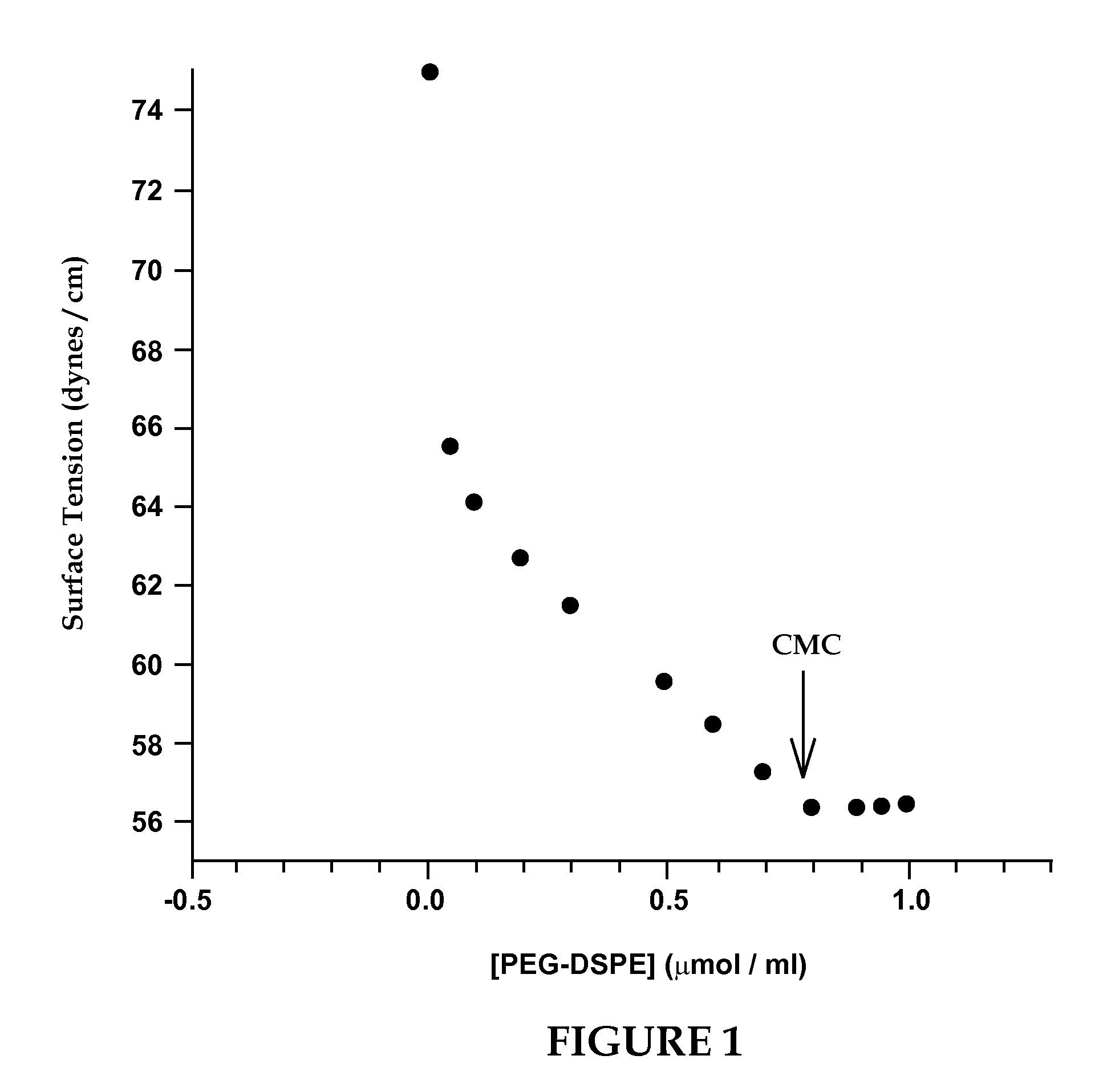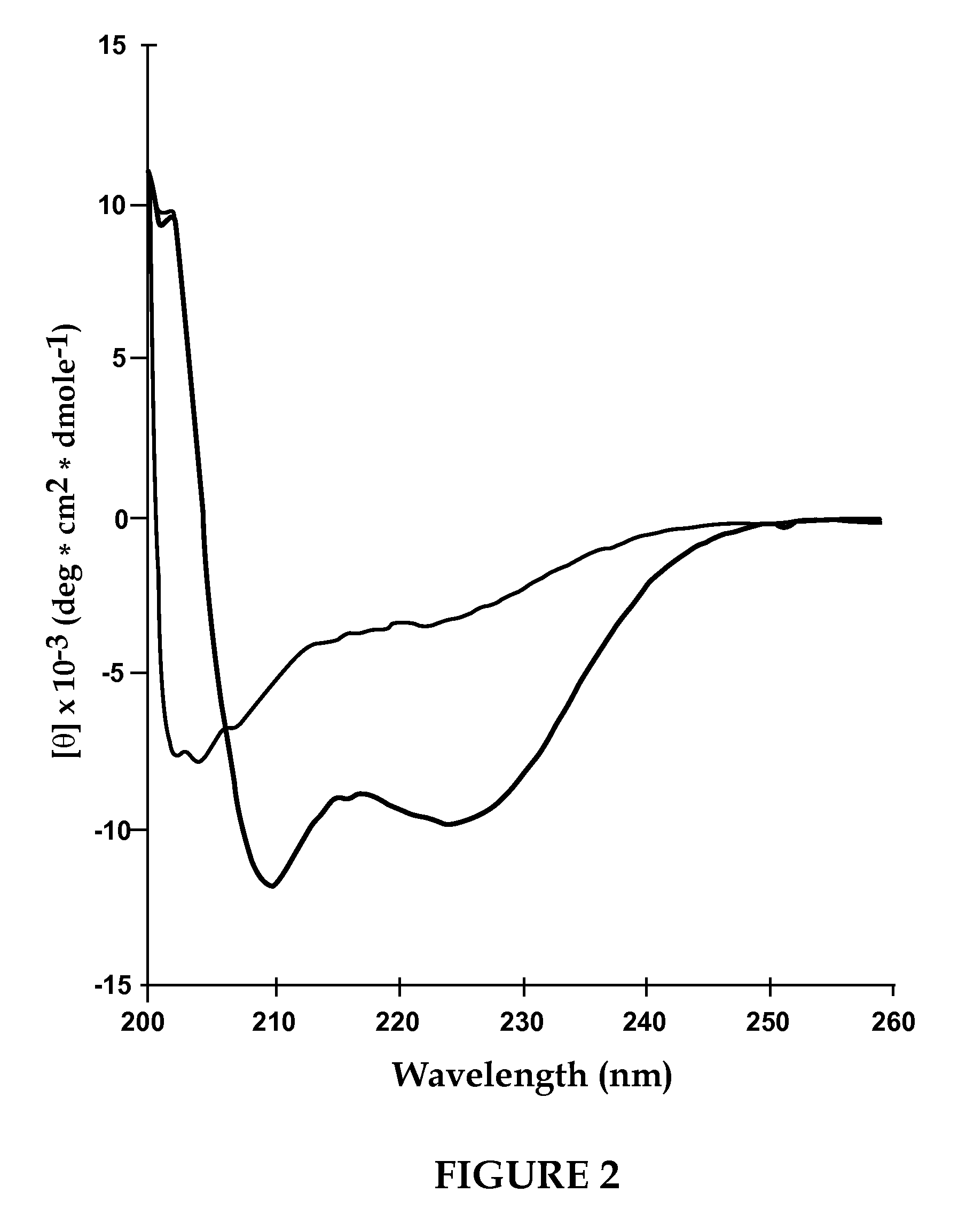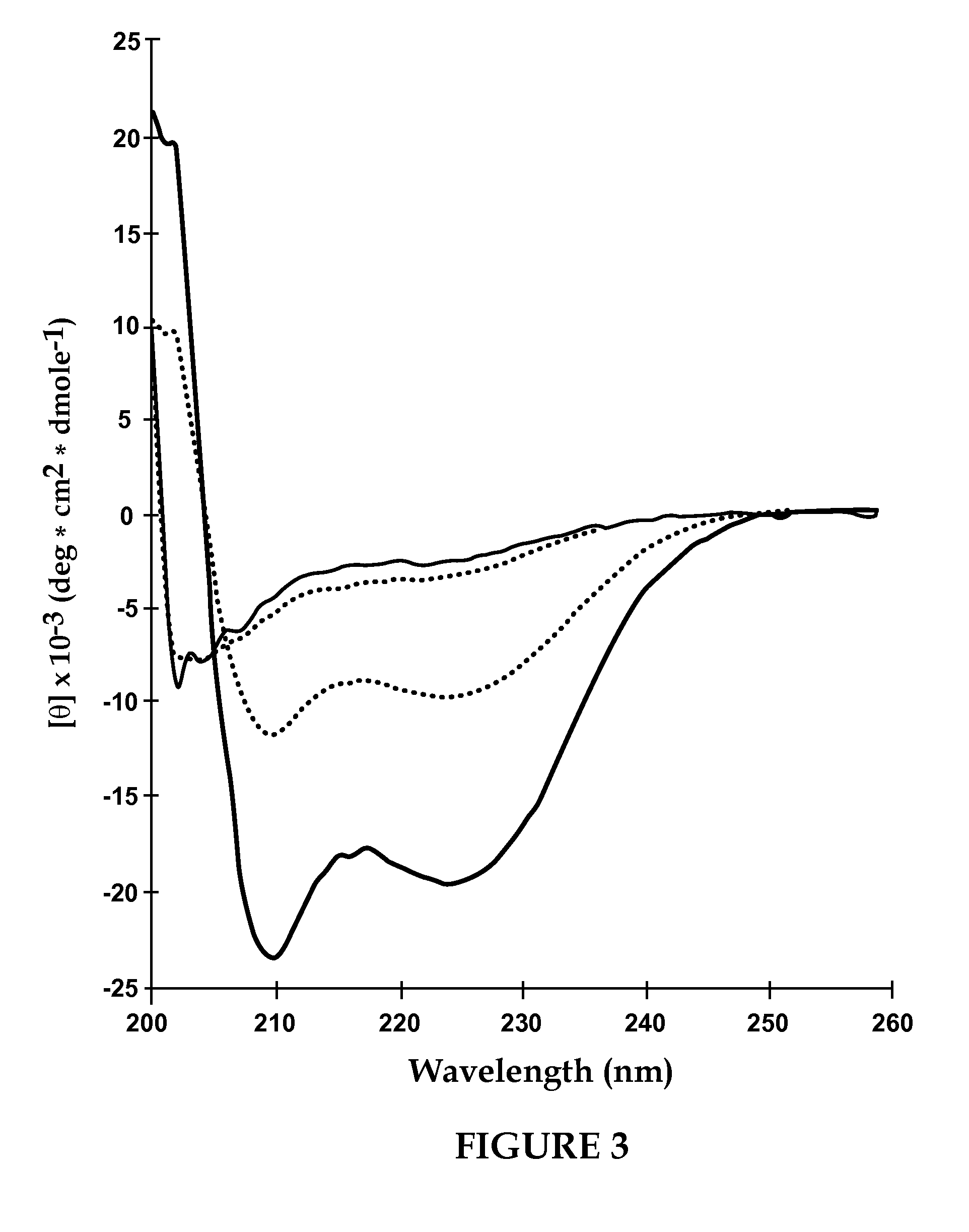Materials and Methods for Making Improved Micelle Compositions
a micelle composition and composition technology, applied in the field of biologically active compounds, can solve the problems of bronchial hyperactivity, insufficiency of vip, and high speculative steps of subsequent camp-induced pathways
- Summary
- Abstract
- Description
- Claims
- Application Information
AI Technical Summary
Benefits of technology
Problems solved by technology
Method used
Image
Examples
example 1
[0130]According to this example, VIP was incorporated into sterically stabilized micelles according to the following procedure. In order to determine the concentration of PEG-DSPE needed to prepare micelles, surface tension studies of PEG-DSPE aqueous solutions were performed. The critical micellar concentration was found to be 0.5 to 1.0 μM, thus 1.0 μM of PEG-DSPE was used to ensure formation of micelles (FIG. 1). PEG-DSPE lipid (1 μmol / ml) was dissolved in chloroform and mixed in a round bottom flask. The organic solvent was evaporated using a rotoevaporater at a bath water temperature of 45° C. (Labconco, Kansas City, Mo.). Complete dryness was achieved by desiccation under vacuum overnight. The dry lipid film was hydrated with saline (0.15 N, pH 6.8) or HEPES buffer (10 mM, pH 7.4). The solution was incubated with human VIP (13 μg / ml) for 30 min before use in circular dichroism. Human VIP (0.1 nmol / ml) was added to the phospholipid micelle suspension and incubated for 2 hours a...
example 2
[0131]According to this example, sterically stabilized micelles comprising VIP and calmodulin were prepared according to the procedure of Example 1 wherein the method of that example was followed to prepare the SSM suspension and during the incubation stage 100 μl of 10−9 M CaM was added to 900 μl of VIP-micelles (giving a total CaM concentration of 10−1° M) and incubated for 2 h at 4° C. before use in circular dichroism. Human VIP (0.1 nmol / ml) and 100 μl of 10−9 M CaM was added to 900 μl of phospholipid micelles (giving a total CaM concentration of 10−10 M) and incubated for 2 hours at room temperature before use in cheek pouch studies. VIP concentration of 0.1 nmol was used to allow comparison of results with VIP in sterically stabilized micelle formulation.
example 3
[0132]According to this example, the size of the vesicles was determined by quasi elastic light scattering (NICOMP model 270 submicron particle sizer, Pacific Scientific, Menlo Park, Calif.). This device contains a 5 mW Helium-Neon Laser at an excitation wavelength of 623.8 nm and with a 64-channel autocorrelation function, a temperature-controlled scattering cell holder and an ADM 11 video display terminal computer (learr Siegler Inc.) for analyzing the fluctuations in scattered light intensity generated by the diffusion of particles in solution. The mean hydrodynamic particle diameter, dh, was obtained from the Stokes-Einstein relation using the measured diffusion coefficient obtained from analysis of autocorrelation functions accumulated for 30 min. The following instrument settings were used; temperature, 23° C.; viscosity, 0.9325 cp; refractive index, 1.333; and scattering angle, 90°. The sterically stabilized phospholipid micelles (SSM) loaded with vasoactive intestinal peptid...
PUM
| Property | Measurement | Unit |
|---|---|---|
| diameter | aaaaa | aaaaa |
| diameter | aaaaa | aaaaa |
| molecular weight | aaaaa | aaaaa |
Abstract
Description
Claims
Application Information
 Login to View More
Login to View More - R&D
- Intellectual Property
- Life Sciences
- Materials
- Tech Scout
- Unparalleled Data Quality
- Higher Quality Content
- 60% Fewer Hallucinations
Browse by: Latest US Patents, China's latest patents, Technical Efficacy Thesaurus, Application Domain, Technology Topic, Popular Technical Reports.
© 2025 PatSnap. All rights reserved.Legal|Privacy policy|Modern Slavery Act Transparency Statement|Sitemap|About US| Contact US: help@patsnap.com



